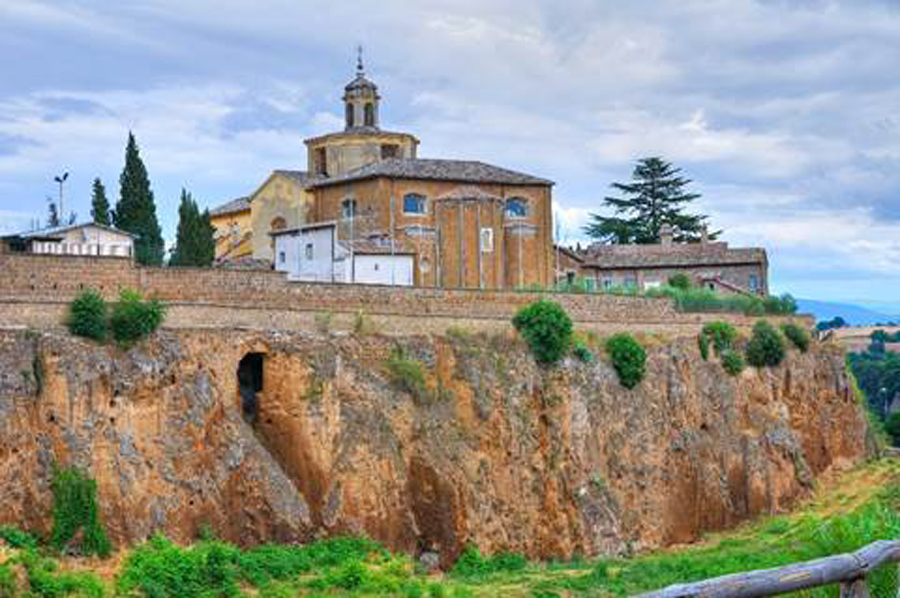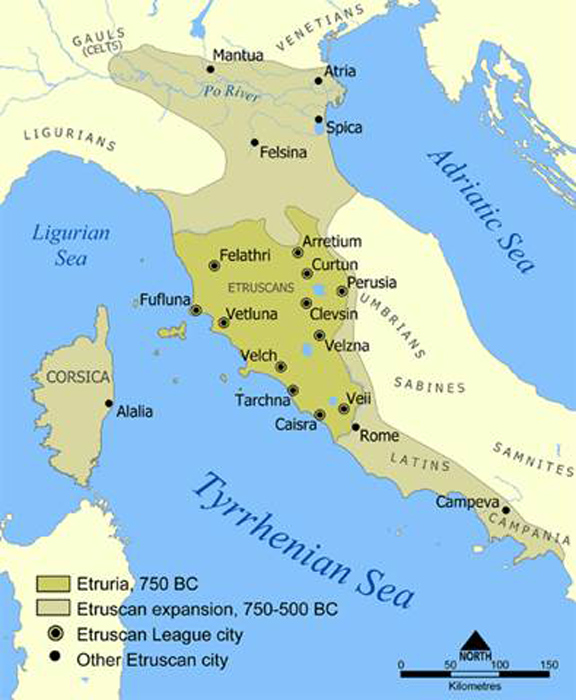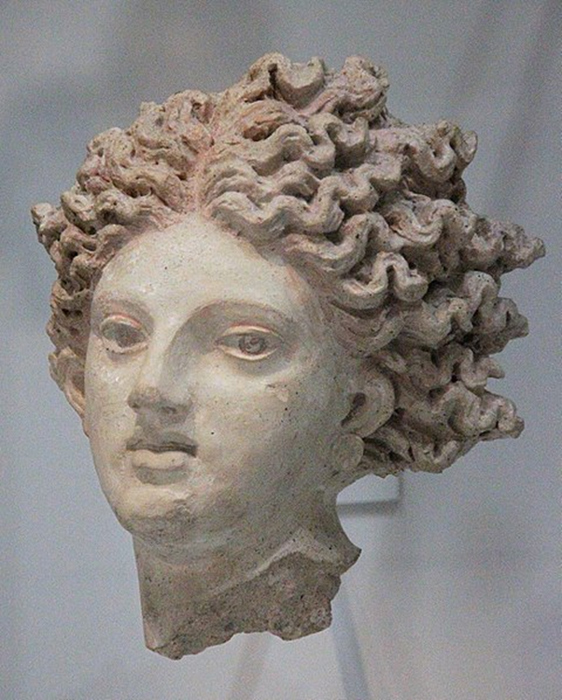The Roman Empire had to start somewhere. From humble beginnings this mighty civilization expanded to conquer much of Europe and northern Africa, but once this great people lived in regional obscurity on the Italian peninsula.
Much is known of the famous Roman victories against the Gauls, the Goths and their mighty rival Carthage. However, comparatively little is known of their first, earliest days of conquest when they won their lands in Italy.
Why is this? Were the Romans so effective in reshaping the land that their predecessors left no trace? Or were they barbarous people, ripe for the conquering?
In reality it seems that neither of these things were true. A magnificent civilization once governed practically the entire peninsula we now call Italy before the little settlement of Rome became the powerhouse it developed into. This was the Etruscan civilization, a long-gone people whose achievements paved the way not only for the development of ancient Roman art and culture but also for the Italian Renaissance.
Who were the Etruscans?
At its peak, the Etruscan civilization of ancient Italy encompassed most of the northern half of the Italian peninsula, stretching from the foothills of the Alps to the site of the city of Rome in the south. Though eclipsed by what came after, the Etruscans were the first superpower of the Western Mediterranean, developing the first genuine cities in Europe alongside the Greeks.
They were so successful that the most important cities in modern Tuscany (for example, Florence, Pisa, and Siena) were founded not by the Romans but by the Etruscans, and have been continuously inhabited since.
The first evidence of an Etruscan culture dates back to around 900 BC. This is the Iron Age Villanovan culture, the first phase of the Etruscan civilization, which arose from the earlier late Bronze Age Proto-Villanovan culture in the same territory.

The Etruscan culture lasted centuries until it was absorbed into Roman society. Assimilation began in the late fourth century BC as a result of the Roman-Etruscan Wars; it intensified with the Romans offering citizenship to the Etruscans in 90 BC, and it was completed in 27 BC when the full territory of the Etruscans was merged into the newly founded Roman Empire.
So what do we know about these people? Unlike the Greeks, the majority of our knowledge of Etruscan art is derived from their tombs. Because most Etruscan cities are continuously inhabited, their Etruscan art and architecture are hidden and obscured beneath later Roman, Medieval, and Renaissance layers.
Fortunately, the Etruscans were highly concerned with providing their dead with all they needed for the afterlife, from vibrant tomb paintings to sculpture to ceramics that they might use in the next world. We can learn about the realm of the dead and the world of the living by visiting their huge cemeteries.
During the early stages of the Etruscan civilization, the afterlife was envisaged in terms of a continuation of life as they knew it. When someone died, he or she was cremated and given another home in the hereafter.
This style of hut urn, built of impasto, an unpolished clay, would be used to contain the deceased cremated remains. Not by chance, it depicts in miniature a typical Etruscan dwelling in Iron Age Etruria oval with a timber roof and a smoke hole for an internal hearth.
Etruscan graves were spacious and emulated household constructions, with wall paintings and even furniture. The deceased was represented in the tomb in their prime, typically with a spouse.
However, not everyone had a sarcophagus. Some deceased people were spread out on stone benches, and depending on the percentage of inhumation vs cremation rites followed, cremated ashes and bones were placed in an urn-shaped like a dwelling or a symbol of the deceased.
Where Did They Come From?
The Etruscan civilization’s territorial expanse peaked in approximately 750 BC, during the foundational period of the Roman Kingdom, before the Republic and later Empire. Its culture thrived in three city confederacies: Etruria (Tuscany, Latium, and Umbria), the Po Valley with the eastern Alps, and Campania.

The Roman historian Livy mentions this league in northern Italy as being a powerful confederation at the time. From this high point the loss of Etruscan land was gradual, but by 500 BC, the political balance of power on the Italian peninsula had shifted away from the Etruscans and toward the burgeoning Roman Republic.
At the height of Etruscan supremacy, aristocratic Etruscan families were extremely wealthy through trade with the Celtic civilization to the north and the Greeks to the south, and they filled their enormous family tombs with imported luxury goods.
- The Painted People: Why Did the Picts Disappear?
- The Toltec Empire: Cultural Appropriation by the Aztecs?
Because the Etruscan language is only partially understood, the current understanding of their society and culture is primarily reliant on much later and generally unfavorable Roman and Greek sources. The Etruscan political structure was based on specific tiny communities and, most likely, prominent individual families.
Inscriptions discovered in southern Etruria from around 700 BC are the earliest known examples of Etruscan writing. The Etruscans created a writing system based on the Euboean alphabet, which was used in Magna Graecia (coastal areas located in Southern Italy).
Could this be where they came from? The origins of the Etruscans have long been a source of fascination and dispute among historians, but almost all of the data accumulated to date by prehistoric and protohistoric archaeologists, anthropologists, and “etruscologists” leads to an indigenous Etruscan origin.
There is no archaeological or linguistic evidence of a Lydian or Pelasgian migration into Etruria, so it seems they did not come from elsewhere as the Dorians did into Greece. This migratory theory, apparently supported by Greek writings, had been popular but modern etruscologists but archaeologists such as Massimo Pallottino (1947) have demonstrated that early historians’ assumptions and conclusions about the subject were unfounded.
Dominique Briquel, an etruscologist, stated in detail in 2000 why he feels ancient Greek historians’ writings on Etruscan origins should not even be considered historical texts. He claims that the ancient story of the Etruscans’ Lydian origins was a deliberate, politically motivated fabrication and that ancient Greeks inferred a connection between the Tyrrhenians and the Pelasgians solely based on certain Greek and local traditions, as well as the fact that the Etruscans and Greeks had traded.
A 2012 study of the past 30 years’ archaeological finds, based on excavations of the major Etruscan settlements, revealed cultural continuity from the late Bronze Age (13th–11th century BC) through the Iron Age (10th–9th century BC). This demonstrates that the Etruscan civilization, which arose approximately 900 BC, was established by individuals whose ancestors had lived in the region for at least the previous 200 years.
All That Remains
The Etruscan civilization is known for having had a significant impact on later Roman culture and political organization. Roman architectural styles, such as the arch and vault, were inspired by Etruscan structures, and the Romans adopted the Etruscan alphabet (although not their language).

Politically, the Roman Senate is thought to have begun as an advisory council to Rome’s Etruscan monarchs. The Roman consuls adopted the Etruscan sign of authority, the “fasces” (a bundle of rods and an axe).
This then would appear to be the answer. The Etruscans remained an important part of the Romans, in their formation, in their populace, and in their history. Who were the Etruscans? The people before the Romans and the people of the Roman Empire.
Top Image: Sarcophagus of the Spouses, a masterpiece of Etruscan art. Source: Sailko / CC BY-SA 4.0.
By Bipin Dimri